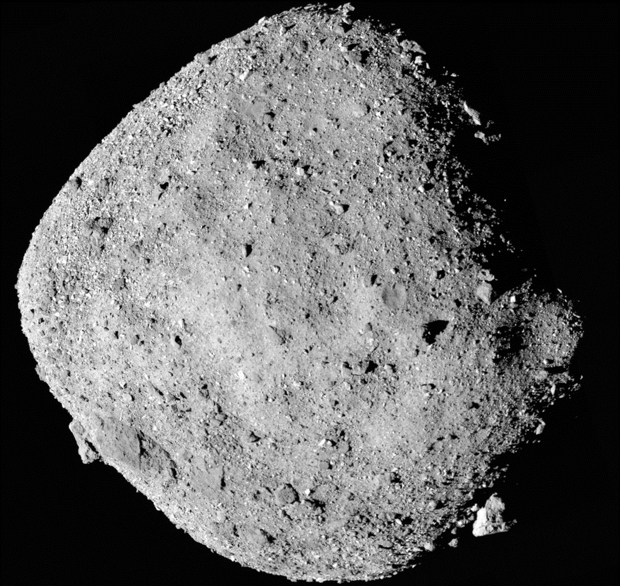
Within days of arriving at an asteroid known as Bennu, NASA’s OSIRIS-REx spacecraft’s two spectrometers were detecting hydrated minerals across the surface of the pebble- and boulder-strewn body, indicating the action of water at some point in the remote past.
During a meeting of the American Geophysical Union in Washington, DC, Amy Simon, a researcher at NASA’s Goddard Space Flight Center in Greenbelt, Maryland, said “to get hydrated minerals in the first place, to get clays, you have to have water interacting with regular minerals.”
“Once you’ve made the clays, they can actually bond and store some of that water in there, make it water bearing, so these hydrated minerals have evidence of liquid water in Bennu’s past,” she said. “So this is really big news.”
Discovered in 1999, Bennu is a 1,600-foot-wide carbonaceous asteroid in an orbit that carries it nearly to the distance of Mars and just inside the orbit of Earth. Its surface is littered with small pebbles, rocks and large boulders up to 150 feet across. Some appear to be lightly resting on the surface while cliff-like outcrops can be seen that indicate more extensive formations.

“It really looks like a pile of rubble,” Dante Lauretta, the OSIRIS-REx principal investigator, said of his initial impressions. “It probably … came from a much larger body on the order of a hundred kilometres in diameter. And that was probably shattered in a catastrophic collision on the order of 800 million to a billion years ago, and Bennu is just an accumulation of rubble from that event.”
The $1 billion OSIRIS-REx mission was launched in 2016 and finally reaching Bennu on Dec. 3. It is expected to slip into orbit around the asteroid by the end of the year. If all goes well, the spacecraft will attempt to collect soil and rock samples in July 2020, returning them to Earth in 2023.
“The presence of hydrated minerals across the asteroid confirms that Bennu, a remnant from early in the formation of the solar system, is an excellent specimen for the OSIRIS-REx mission to study the composition of primitive volatiles and organics,” Simon said in a NASA statement.
“When samples of this material are returned by the mission to Earth in 2023, scientists will receive a treasure trove of new information about the history and evolution of our solar system.”



